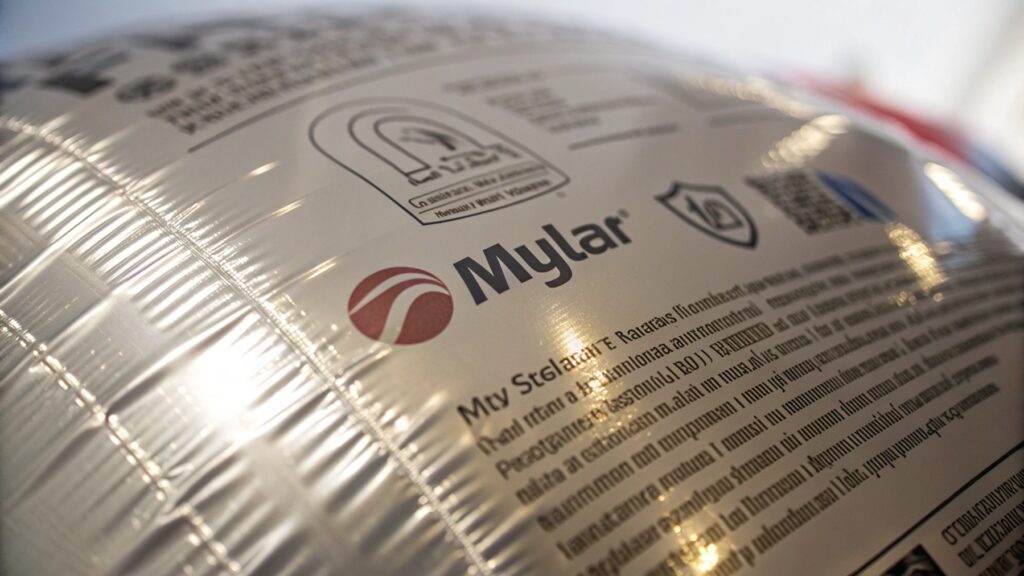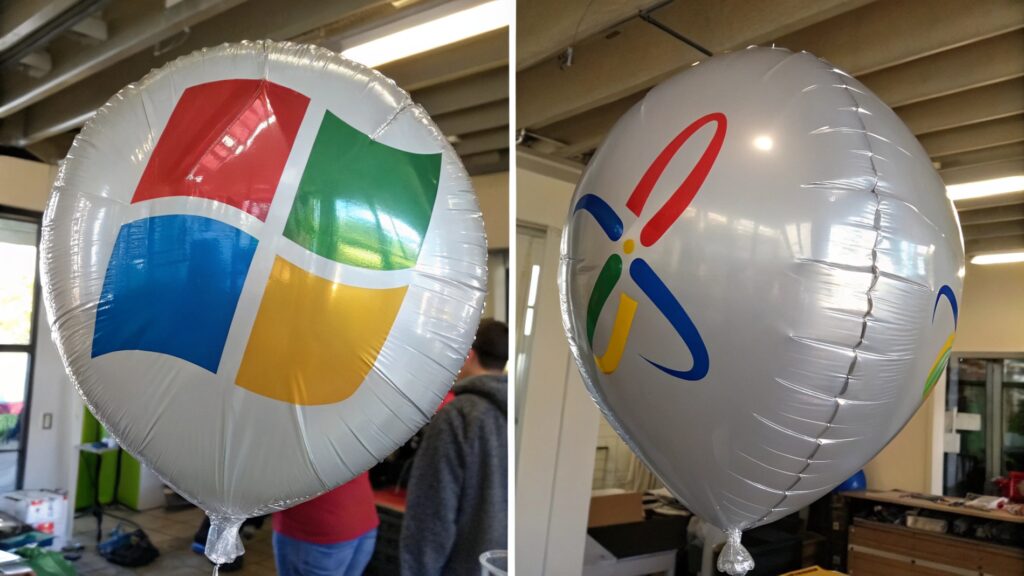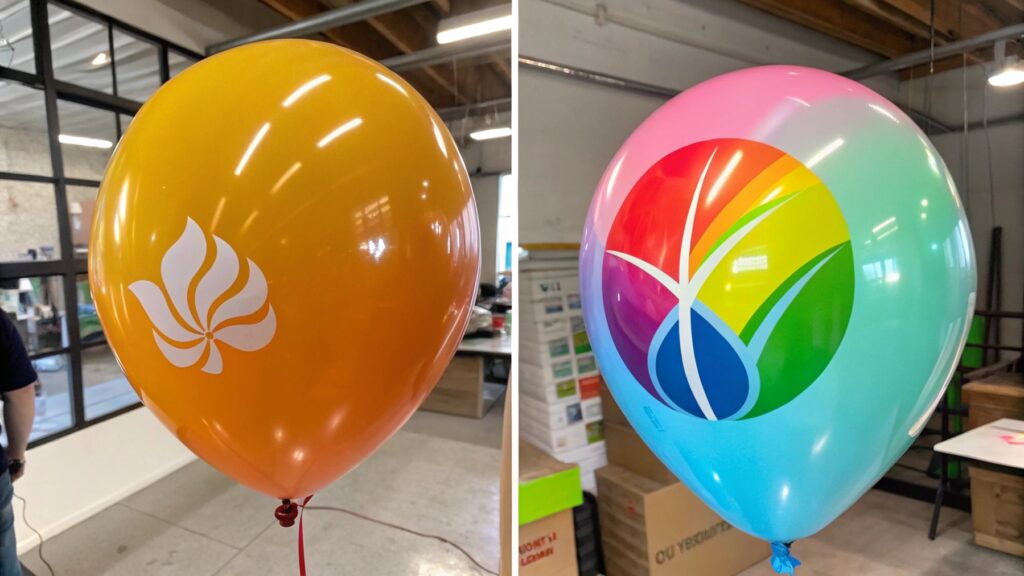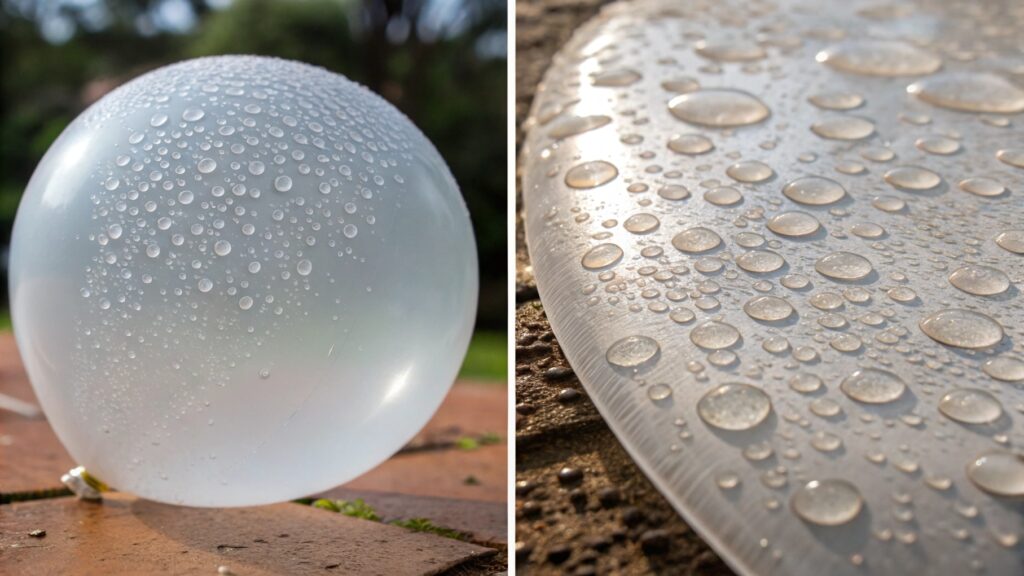Comparing Latex vs Mylar Balloons: Which offers better print quality for branding?
Choosing the right balloon can make or break your brand's visual impact. Does your current choice truly capture your logo's essence? Are your promotional efforts falling flat due to blurry prints or dull colors?
For superior print quality1 and vibrant branding, Mylar balloons2 generally outperform latex due to their smooth, non-porous surface, allowing for sharper image reproduction and greater color accuracy3, especially for intricate designs and corporate logos.

As a procurement manager, I constantly evaluate material choices. I look for the best balance of quality, cost, and visual impact. Let me share what I have learned about how Mylar and latex balloons perform when it comes to branding and print quality.
Which balloon type provides sharper image reproduction4 for custom logos?
Are your custom logos looking as sharp as they should on balloons? Do you struggle with blurry edges or fuzzy details when trying to promote your brand?
Mylar balloons offer significantly sharper image reproduction for custom logos because their smooth, non-porous surface prevents ink absorption and spreading, ensuring precise lines and crisp details, unlike the porous nature of latex.

When I review samples from different manufacturers, I pay close attention to how well a logo is rendered. I look at the fine lines, the small text, and the overall clarity. With latex balloons, the material is naturally porous. This means that when ink is applied, it can spread slightly, causing edges to appear softer or less defined. It is like printing on a paper towel instead of glossy photo paper. For simple, bold logos, this might not be a big issue. But for complex designs with intricate details, that slight bleed can make a big difference. Think about a company logo with a small tagline or a detailed graphic element. On a latex balloon, those details might get lost or look smudged.
Mylar balloons, on the other hand, are made from a thin, metallic film. This surface is incredibly smooth and non-porous. When ink is applied, it sits directly on top of the material without seeping in. This allows for incredibly sharp lines and crisp details. It is like printing on a high-quality glossy brochure. I have seen Mylar balloons where even very small text is perfectly readable. For corporate branding, where precision and professionalism are key, Mylar definitely has the edge. This is crucial for brands like ours, AIHUA BALLOON, which rely on precise representation of our brand for our global partners.
| Feature | Latex Balloons | Mylar Balloons |
|---|---|---|
| Surface | Porous, slightly textured | Smooth, non-porous, metallic |
| Ink Absorption | High, can lead to spreading | Low, ink sits on surface |
| Detail Clarity | Good for simple designs, softer edges | Excellent, sharp lines and fine details |
| Resolution | Lower effective resolution | Higher effective resolution |
| Best Use Case | General promotions, simple logos | Intricate designs, corporate branding |
Are there significant differences in color vibrancy5 for branded designs between latex and Mylar?
Are you finding your brand colors looking dull or inconsistent on balloons? Do your vibrant designs lose their punch when printed for promotions?
Yes, Mylar balloons typically offer superior color vibrancy and accuracy for branded designs because their reflective, non-porous surface allows ink colors to appear brighter and truer to the original palette, unlike the matte and absorbent surface of latex.

Color accuracy is vital for brand consistency. When I approve balloon samples, I compare the printed colors directly against our brand guidelines. With latex balloons, achieving true color vibrancy can be a challenge. The natural, often matte finish of latex and its slightly absorbent nature can mute colors. Imagine painting on a piece of cardboard versus a glossy canvas. The cardboard absorbs some of the paint, making the color appear less intense. The same happens with latex balloons. Your vibrant brand red might look more like a muted brick red. This can be problematic when you have specific brand colors that need to be consistently represented across all marketing materials.
Mylar balloons, however, have a distinct advantage here. Their smooth, reflective surface acts like a canvas that makes colors pop. Since the ink does not absorb into the material, it sits on top, reflecting light and maintaining its true hue. I have observed that colors on Mylar balloons appear much brighter, more saturated, and closer to the original pantone values. This is especially important for brands with specific color palettes, as it ensures that your promotional balloons accurately reflect your brand identity. For our AIHUA BALLOON brand, which aims to "Make Moments Colorful," vibrant colors are not just a preference, but a core part of our brand promise. This is why we prioritize materials that can deliver on that promise for our customers.
| Aspect | Latex Balloons | Mylar Balloons |
|---|---|---|
| Surface Effect | Matte finish, can mute colors | Reflective, enhances color brightness |
| Color Absorption | Absorbs ink, less intense hues | Non-absorbent, true-to-hue colors |
| Light Reflection | Less reflective, duller appearance | Highly reflective, vibrant appearance |
| Brand Consistency | More challenging to maintain strict colors | Easier to achieve accurate brand colors |
| Visual Impact | Good for general use, less striking | High impact, visually strong |
For detailed corporate branding, does Mylar or latex offer superior graphic clarity?
When it comes to intricate corporate branding, are your current balloons falling short on clarity? Do complex logos or fine print appear muddled on your promotional items?
Mylar balloons offer superior graphic clarity for detailed corporate branding due to their smooth, non-porous surface, which allows for precise ink application and prevents bleeding, making them ideal for intricate designs, small text, and sharp photographic images.

In my role overseeing procurement, especially for brands requiring high-level corporate representation, graphic clarity is non-negotiable. I have seen many instances where a beautifully designed logo or a complex promotional graphic loses its impact when printed on the wrong material. With latex balloons, the inherent texture and slight porosity mean that very fine lines, tiny text, or highly detailed images can become fuzzy or even illegible. Imagine trying to read the fine print of a legal document if it were printed on a textured fabric. That is similar to the challenge with latex for highly detailed graphics. For simple, bold lettering or large, blocky designs, latex can work fine. But as soon as you introduce gradients, intricate patterns, or small elements, the limitations become clear.
Mylar balloons, conversely, excel in graphic clarity6. Their perfectly smooth surface provides an excellent substrate for printing, allowing for extremely sharp resolution. This means that gradients transition smoothly, small text remains crisp and readable, and even photographic images can be reproduced with impressive detail. For corporate branding, where logos often include specific typefaces, intricate symbols, or even photographic elements, Mylar is the clear winner. It ensures that every aspect of your brand's visual identity is represented with the precision it deserves. This helps to uphold the professional image that companies like AIHUA BALLOON aim for in every product we offer to our global partners.
| Attribute | Latex Balloons | Mylar Balloons |
|---|---|---|
| Detail Reproduction | Limited, susceptible to blurring | Excellent, sharp and precise |
| Text Clarity | Good for large text, poor for small | Superior for all text sizes |
| Image Fidelity | Lower, less capable for complex images | High, suitable for photographic images |
| Gradient Smoothness | Can show banding or unevenness | Smooth, seamless transitions |
| Overall Professionalism | Moderate for detailed branding | High, conveys premium quality |
How does the surface of latex compare to Mylar for achieving high-resolution print quality in promotional balloons?
Are you struggling to achieve high-resolution print quality for your promotional balloons? Does the surface of your chosen balloon material limit the impact of your designs?
The smooth, non-porous surface of Mylar balloons is far superior for achieving high-resolution print quality compared to the textured, porous surface of latex, allowing for sharper images, finer details, and more accurate color reproduction essential for effective promotional branding.

From my experience, the surface of a material is the single most important factor determining print quality. It is like the foundation of a house; if the foundation is not solid, the whole structure will be compromised. When it comes to latex balloons, the surface has a slightly textured, somewhat porous quality. This means that when ink hits the surface, it does not just sit neatly on top. It can spread slightly, or the uneven texture can cause minor imperfections in the print. This is acceptable for designs that do not require high precision. For high-resolution images or intricate graphics, this becomes a significant limitation. It is hard to achieve a truly crisp, high-definition print when the canvas itself is not perfectly smooth.
Mylar, by contrast, has an almost glass-like smoothness. This perfectly flat and non-absorbent surface allows ink to be applied with extreme precision. Every dot of ink lands exactly where it is intended, without any bleeding or spreading. This is what enables the sharp lines, vibrant colors, and fine details that Mylar balloons are known for. For promotional balloons where you want your brand message to be clear, impactful, and professional, this high-resolution capability is indispensable. Whether it is a QR code, a detailed product image, or a complex logo, Mylar ensures that your promotional efforts look their best. While latex balloons definitely have a higher production volume in our factory, Mylar offers a distinct advantage when it comes to visual fidelity for high-resolution printing.
| Feature | Latex Balloon Surface | Mylar Balloon Surface |
|---|---|---|
| Texture | Slightly textured, matte | Extremely smooth, glossy/metallic |
| Porosity | Porous, absorbs ink | Non-porous, repels ink |
| Ink Adherence | Absorbed, can spread | Sits on surface, precise |
| Detail Definition | Limited by surface texture | Excellent, highly defined |
| Color Fidelity | Can be muted, less vibrant | Vibrant, true to color |
| Resolution Cap. | Lower effective DPI | Higher effective DPI |
| Overall Print Quality | Good for general purposes | Superior for high-resolution needs |
Conclusion
For superior print quality in branding, Mylar balloons offer sharper details, vibrant colors, and higher graphic clarity due to their smooth, non-porous surface, making them ideal for detailed corporate designs over latex.
-
Understanding print quality is crucial for effective branding; discover its impact on your marketing success. ↩
-
Explore how Mylar balloons can enhance your brand's visual impact with superior print quality and vibrant colors. ↩
-
Learn why color accuracy is vital for brand recognition and how it can elevate your promotional efforts. ↩
-
Discover the key factors that affect image reproduction on balloons to improve your branding strategies. ↩
-
Learn about the factors influencing color vibrancy in balloon printing to ensure your designs stand out and maintain their intended impact. ↩
-
Understanding graphic clarity can enhance your promotional strategies, ensuring your designs make a strong impact. ↩
